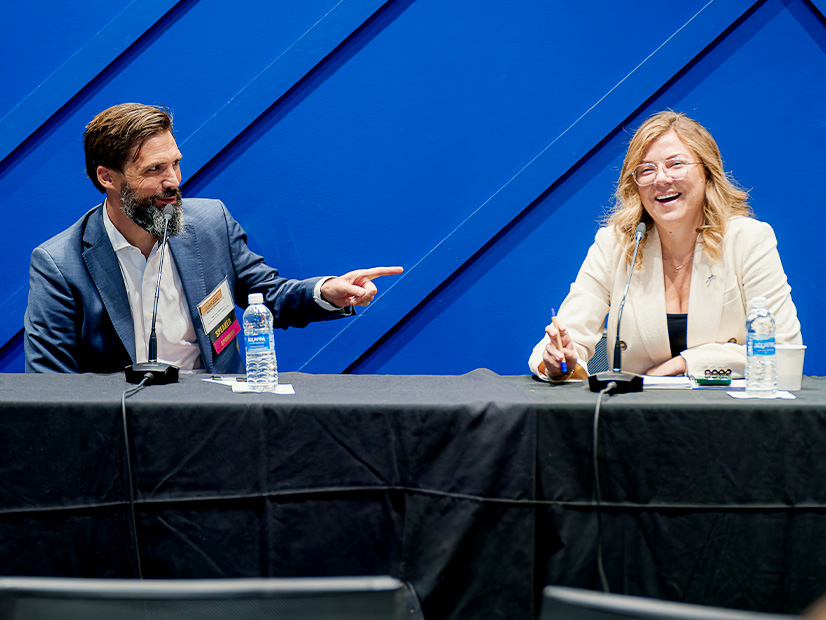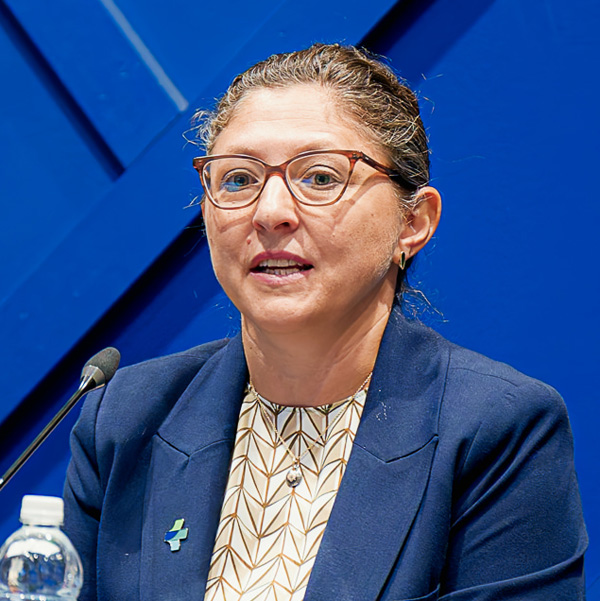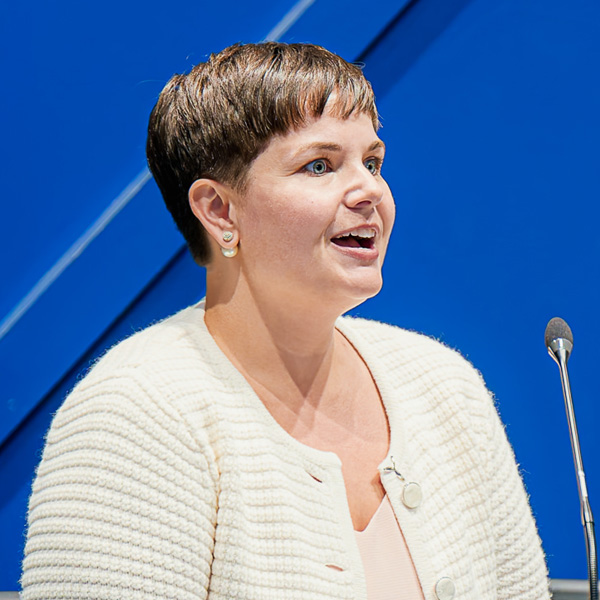
With the recent completion of the first phase of the New Jersey Wind Port, the state’s offshore wind sector looks to take a key role in the East Coast turbine industry despite the closure of the state’s two most advanced projects, speakers said at the state’s annual OSW conference.
A year after Ørsted stunned state officials and abandoned the state’s first two offshore wind projects, New Jersey has adapted to changing circumstances and developers are better prepared to weather the still difficult environment, speakers said at the Time for Turbines conference Oct. 11 in Atlantic City.
Atlantic Shores Offshore Wind, now the most advanced project in the portfolio approved by the New Jersey Board of Public Utilities (BPU), is moving ahead with its previously approved project, Atlantic Shores South 1, and a second one, Atlantic Shores South 2, Joris Veldhoven, the developer’s CEO, told attendees.
The Bureau of Ocean Energy Management (BOEM) on Oct. 1 approved the two projects’ construction and operations plan. And the company is close to awarding the last contracts and subcontracts for the first project, he said.
Veldhoven, in what emerged as a central theme among conference speakers, cited developers’ need to secure a strong supply chain pipeline, and the state’s ability to provide it, as key factors in their ability to move projects to completion, and for the sector to advance.
“In the current market, it is so critical that we locate these packages,” Veldhoven said. “Having that maturity, having the certainty that the supply chain is for you, is absolutely critical.”
In some respects, the state’s OSW sector is better able to get projects done than in the past, because developers such as Atlantic Shores are “more aware of the supply chain risk,” he said.
Likewise, regulators have recognized — and adapted to — the financial pressures that developers can face, among them the rise in interest rates, he said.
“What regulators have done over the last few years, and kudos to them, here in New Jersey and other states, there’s now a bit more of these inflation adjustment mechanisms that take into account various factors, and they started to even take into account cost of money,” he said. “Is that perfect? No, it’s not. But it shares some of the risk.”
‘Miracle’ Port Advance
Tim Sullivan, CEO of the New Jersey Economic Development Authority, which oversees port construction and funds much of the state’s OSW initiatives, said completion of the first phase of the wind port shows the state is a serious player in the East Coast wind sector.
The fact the first phase of the project came in “on time and under budget,” he said, is “close to a damn miracle.”
Other state competitive strengths include a “steady diet” of new project procurements, a “real commitment” from Gov. Phil Murphy (D) and — in the EEW monopile factory in Paulsboro — the only manufacturing facility that’s active in the U.S. for offshore wind components.
“Despite having fallen behind on the generation side a bit, we’re going to catch up,” Sullivan said. “We are still in the best position long term, and we are investing for the long term. … This is not a one-, two-, three-, four-, five-year ambition. This is a 50-year ambition. A century-long ambition.”
Murphy has set a goal for the state to have 11 GW of OSW capacity by 2040. Atlantic Shores is one of three companies awaiting the BPU’s decision in the state’s fourth offshore wind solicitation, which is expected by the end of 2024. The state is preparing to launch a fifth solicitation in early 2025. (See 3 OSW Proposals Submitted to NJ.)
The BPU approved Ørsted’s Ocean Wind 1 in the first solicitation in 2019 and the developer’s Ocean Wind 2 in the second solicitation in 2021, in which the 1,510-MW first part of Atlantic Shores also was approved. The BPU backed two projects — the 1,342 MW Attentive Energy Two and Leading Light Wind, with two phases of 1,200 MW each — in the third phase and is expected to announce the designated projects in the fourth solicitation by the end of 2024.
That fourth solicitation allowed developers awarded contracts in the first or second procurement — of which Atlantic Shores is the only remaining project — to submit a rebid that would enable them to adjust for rising costs. Atlantic Shores took that opportunity and also submitted the second half of the project, Atlantic Shores South 2.
The other applicants awaiting the BPU’s decision are Attentive Energy, with a second project, and Community Offshore Wind, for a 1,300-MW project.
Supply Chain Building
Yet the sector still is challenging, as shown by the difficulty Leading Light Wind has experienced in finding an economically viable turbine. On Sept. 25, the BPU approved a request by developer Invenergy to delay the project by three months because none of the three turbine manufacturers initially selected by the developer — GE Vernova, Siemens Gamesa Renewable Energy or Vestas — are able to supply suitable new turbines.
Some projects are moving to mitigate risk and create key elements of their own supply chain, conference speakers noted.
Attentive Energy, which hopes to begin construction in two to three years and complete the project by 2031, is vying for space in the wind port, said Karen Imas, the company’s senior external affairs manager. If Attentive’s bid is successful, the company plans to execute project marshaling and work with a manufacturer to build a factory there, she said.
Attentive also has committed $58.85 million into the third phase of EEW’s Paulsboro factory building monopiles, part of the foundations of offshore turbines, Imas said in an interview with NetZero Insider after her panel.
The arrival of Attentive and other developers in a second OSW wave may make them better placed to handle future challenges, she said.
“We are able to maybe anticipate a little bit more supply chain, timelines, projections,” she said. “We bid in with a certain price that we think is realistic today, and you know, maybe that sets us up with a little more stability than those awarded two, three years ago.”
Mitigating Risk
Imas pointed to the developer’s recent partnership with the New Jersey Manufacturing Extension on a policy paper published in October analyzing the readiness of the state’s manufacturing sector to adapt to the needs of the offshore wind sector. The extension interviewed 18 manufacturers about their capacity and interest in shifting gears.
The study found the companies can “pivot and provide some of the materials, the widgets, the products that would be needed for the larger Tier One, Tier Two manufacturers,” she said. Yet the study also found that 66% of the companies interviewed would require “targeted funding for process or technology upgrades” to take part in the sector.
“They need some technical assistance,” she said. “They may need increased staffing. They may need some special certifications and trainings. And that pivot will take some work. So we as a developer are taking note of this survey and what’s been reported, because we want to work hand in hand with these companies and really help arm them with the tools they need to participate.”
Those kinds of supply chain challenges are enhanced by the steady advance of a wave of OSW projects from different states all moving head and seeking the same resources, said Abby Watson, president of The Groundwire Group, a consultancy that focuses on sustainable energy.
“We have a lot of projects now that are all looking at building within a fairly short period of a couple of years,” Watson said, speaking on a panel entitled “Navigating Choppy Financial Waters.” “And that is an incredibly challenging commercial environment in which to build a successful business case for a manufacturing facility that’s going to be viable in the long term.
“I think we’re seeing that in some of the ways that different states are kind of redesigning some of their procurements to emphasize viability” and looking for ways to “de-risk that project.”



